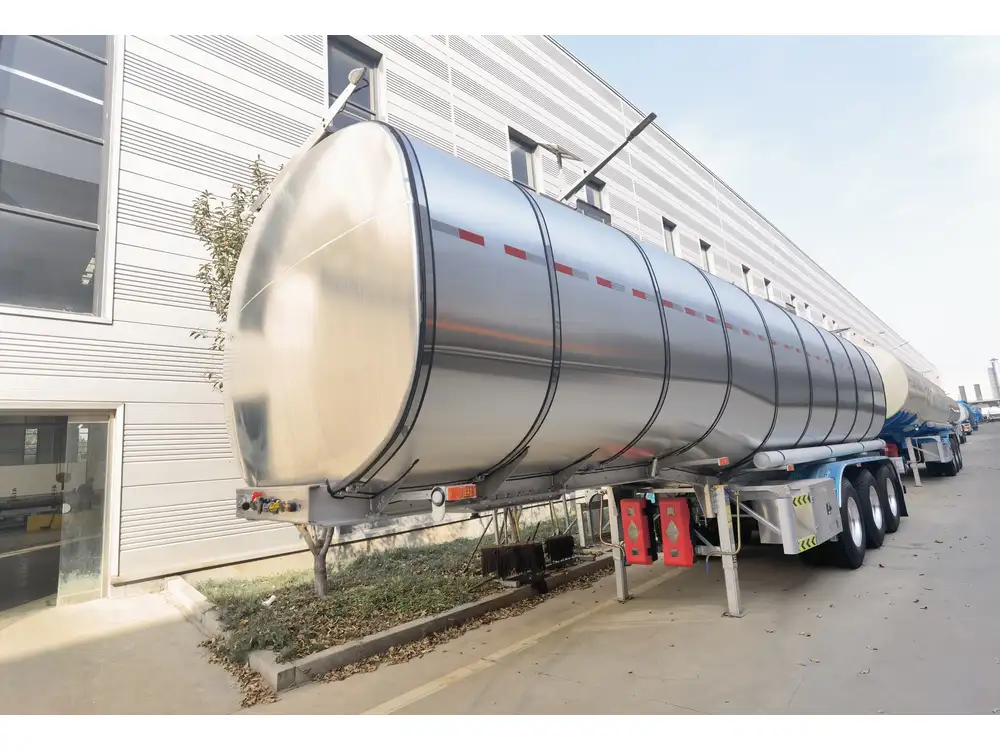The trucking industry forms the backbone of the economy, effectively facilitating the transport of goods across vast distances. A pivotal factor that trucking companies and operators need to comprehend is the weight of semi trucks paired with 53-foot trailers. This understanding is critical for compliance with regulations, safe operation, and optimizing performance. Let’s delve into the intricacies surrounding the weights involved.
The Basics of Truck Weight Classification
Before we get into the specifics, it’s vital to understand the classifications established by regulatory bodies. Here’s a quick breakdown:
| Weight Class | GVWR (Gross Vehicle Weight Rating) | Typical Load Capacity |
|---|---|---|
| Light-Duty Trucks | Up to 8,500 lbs | About 1,500-2,000 lbs |
| Medium-Duty Trucks | 8,501 to 26,000 lbs | Up to 10,000 lbs |
| Heavy-Duty Trucks | Over 26,000 lbs | 10,000 lbs and above |
Importance of Gross Vehicle Weight Rating (GVWR)
Understanding the GVWR of a semi truck and trailer is fundamental. It represents the maximum weight a vehicle can safely carry, including:
- The vehicle’s own weight.
- The weight of cargo and passengers.
- Any additional equipment.
Exceeding the GVWR can lead to severe legal penalties and risks, including accidents due to overloading.

What Does a 53-Foot Trailer Weigh?
A standard 53-foot trailer’s weight can vary depending on the construction materials and design, but generally, the unladen weight is approximately:
- Standard Dry Van Trailer: 15,000 to 17,000 lbs
- Reefer (Refrigerated) Trailer: 14,000 to 17,500 lbs
- Flatbed Trailer: 12,000 to 16,000 lbs
Key Considerations for Trailer Weight
- Material Composition: Trailers made from aluminum can weigh significantly less than those made from steel or other heavier materials.
- Design Complexity: Features such as refrigeration units or special equipment add to the overall weight.
- Regulatory Compliance: Understanding weight limits is crucial for avoiding fines and penalties during inspections.
Semi Truck Weight Breakdown
The weight of a semi truck can vary based on multiple factors, including the make and model, but a typical truck configuration (tractor) includes:
- Tractor Weight (Unloaded): 15,000 to 20,000 lbs
- Loaded with 53-Foot Trailer: 65,000 to 80,000 lbs (maximum legal limit in many states)

Components Contributing to Truck Weight
- Engine: The engine’s size and type (diesel vs. alternative fuels) significantly influence the truck’s overall weight.
- Chassis and Body: The materials and design of the chassis impact durability against weight.
- Axles: More axles generally mean higher load capacity but also increased weight.
Total Weight Calculation: Semi Truck + 53-Foot Trailer
To obtain the total weight of a fully loaded semi truck with a 53-foot trailer, you must add the tractor’s weight to the trailer’s weight. For instance:
- Typical Calculation:
- Tractor Weight: 18,000 lbs
- 53-Foot Trailer (Dry Van): 16,000 lbs
- Total Empty Weight: 34,000 lbs
When fully loaded with cargo:
- Cargo Weight: 45,000 lbs
- Total Loaded Weight: 79,000 lbs
Legal Limits and Regulations
The Federal Motor Carrier Safety Administration (FMCSA) stipulates that the maximum allowable weight for a standard semi-truck and trailer combination is 80,000 lbs. Exceeding this can lead to fines, cargo delays, and increased wear on the equipment.
| Weight Category | Weight Limit |
|---|---|
| Single Axle | 20,000 lbs |
| Tandem Axles | 34,000 lbs |
| Total Combination | 80,000 lbs |

Why Understanding Trailer Weights is Important for Trucking Companies
Cost Efficiency and Budget Management
Overloaded trucks can result in increased fuel consumption, leading to higher operational costs. Understanding weight limits enables trucking companies to optimize loads for better fuel efficiency while adhering to legal restrictions.
Safety Concerns
Safety on the road is paramount. Overloaded vehicles are more difficult to handle, increasing the risk of accidents. Proper weight management plays a crucial role in ensuring that trucks operate safely.

Regulatory Compliance
Awareness of weights prevents companies from encountering legal repercussions due to overweight fines and penalties. Keeping trucks within weight regulations ensures seamless transport operations.
Additional Considerations When Hauling Heavy Loads
Load Distribution
Improper load distribution can affect the safety and handling of a semi-truck. Uneven weight can cause premature tire wear and increase the risk of accidents. To distribute load effectively, consider:
- Center of Gravity: Keep heavier items low and in the center of the trailer.
- Securing Loads: Use straps and chains to prevent shifting during transit.

Seasonal Weight Restrictions
Certain states enforce seasonal weight limits to protect road conditions. Companies must adjust their load strategies accordingly during these periods.
Conclusion
Understanding the intricate details about the weight of semi trucks and 53-foot trailers is not just beneficial but imperative for operators and trucking companies alike. Adhering to weight limits, maintaining safety standards, and optimizing load management ultimately contributes to the operational efficiency and longevity of equipment.
By incorporating meticulous weight analysis with an eye on regulatory compliance and safety, we position ourselves for success in an industry where precision and accountability reign supreme. With this knowledge, trucking enterprises can enhance both profitability and safety, ensuring continuous service excellence while adhering to legal mandates.
This comprehensive approach to understanding the weight of semi trucks and paired 53-foot trailers serves not just as a guide but as a foundational pillar for safe and economically viable trucking operations.



